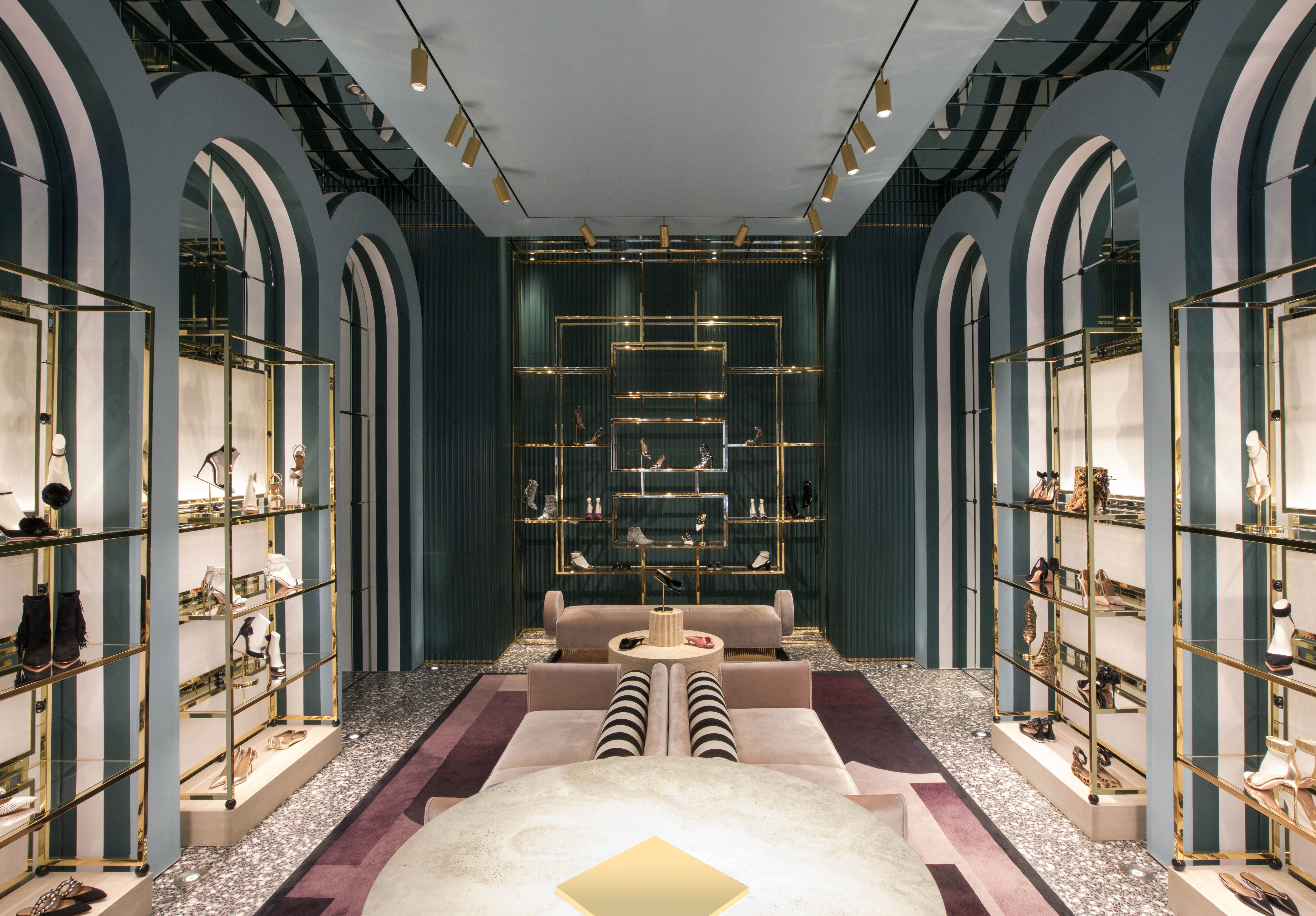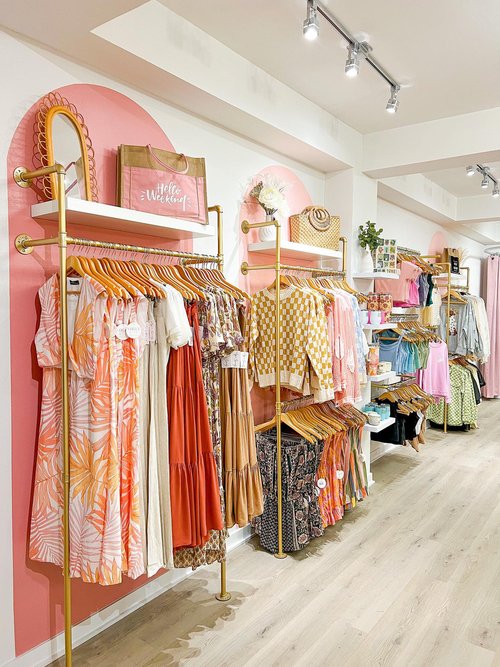A Newbie's Guide to Browsing the Boutique Fashion Scene
A Newbie's Guide to Browsing the Boutique Fashion Scene
Blog Article
A Deep Dive Into the Globe of High-Fashion Runways: Comprehending Garments as Art
High-fashion paths have actually emerged as arenas where clothes transcends its utilitarian beginnings, evolving right into an advanced kind of imaginative expression. Developers, a lot like skillful artists, weave detailed narratives via shade, textile, and form, redefining and testing conventional standards beauty criteria. These shows are greater than plain display screens; they are immersive experiences, where every stitch and seam informs a story abundant with social importance and progressive advancement. As we discover these sartorial spectacles, we must contemplate: what function does fashion play fit societal values, and exactly how does it mirror the ever-changing tapestry of human emotion and identity?
The Evolution of Runway Shows
The trajectory of path shows has actually transformed substantially over the years, advancing from exclusive market occasions to captivating spectacles that blend fashion with art. Commonly, runway shows made love events, held in ateliers or small places, mostly gone to by purchasers and sector experts. These very early presentations concentrated on the garments' workmanship and business stability, offering a practical and direct display screen of seasonal collections.
As the fashion sector increased, the nature of runway shows began to change. The 1970s and 1980s noted a transforming factor, with designers seeking to distinguish themselves via even more theatrical presentations.
Over the last few years, technology and social media sites have additionally transformed runway programs, making them accessible to an international target market. Livestreaming and digital systems have equalized style, enabling enthusiasts worldwide to witness these occasions in real-time (boutique fashion). This development mirrors a wider social shift, where high-fashion paths act as a vibrant intersection of style, advancement, and efficiency
Designers as Visionary Artists
How have developers transcended their roles to come to be visionary musicians? Developers in the high-fashion industry have actually blurred the lines in between useful garment creation and the conceptual realm of art. This improvement appears in the way they approach their collections, not merely as clothing however as profound expressions of identity, feeling, and culture. By embracing creative self-controls such as sculpture, painting, and avant-garde installations, designers craft garments that test typical style standards and elevate them to art types.
Visionary developers attract motivation from a myriad of sources, including abstract art, historical references, and individual narratives. They possess a special ability to envision and emerge ideas that press the borders of traditional fashion, frequently redefining visual standards at the same time. This innovative resourcefulness is showcased via significant shapes, cutting-edge products, and complex craftsmanship, which welcome viewers to experience style as more than simply wearable products.
In addition, the path works as a canvas for these musicians, where illumination, music, and established layout coalesce to produce immersive experiences. These discussions are not simply screens of clothing yet are managed efficiencies that evoke emotion and provoke thought, attesting the designer's function as a true musician in the modern cultural landscape.
Cultural Impacts in vogue
Social tapestry weaves its detailed patterns right into the textile of style, affecting developers worldwide. The vibrant interchange of social tales, customs, and icons notifies and motivates collections that grace high-fashion runways. Developers thoroughly draw from their heritage or involve with cultures distinct from their very own, crafting garments that function as visual narratives. This social discussion not only improves the visual variety but likewise fosters a deeper understanding and gratitude of global identities.
The impact of society on style is often seen in the reinterpretation of standard garments and patterns. The use of Japanese robes, Indian saris, or African prints in modern style mirrors a mix my company of social authenticity and modern-day appearances. Designers such as Valentino's Pierpaolo Piccioli and Alexander McQueen's Sarah straight from the source Burton have actually been known to integrate rich social concepts into their couture collections, translating history right into wearable art.

Development in Material and Layout
Advancement in fabric and design regularly reshapes the landscape of high-fashion, pressing boundaries and redefining opportunities. Developers are progressively discovering the integration of innovation, such as 3D printing, which allows for the production of complicated structures that were previously inconceivable.
The style market is experiencing a surge in the usage of environment-friendly products, acquired from recycled plastics, natural fibers, and even eco-friendly components. Developers are embracing these products to craft garments that are both mindful and visually striking of their eco-friendly footprint.
In regards to style, progressive silhouettes and experimental forms are continuously changing the runway. By including sophisticated techniques and non-traditional materials, developers grow garments that obscure the line between style and art, establishing new standards for creative thinking and expression in the high-fashion sphere.
Influence of Fashion on Culture
Fashion wields a profound impact on culture, working as both next a representation of cultural identification and a driver for social change. Through its evolution, style has actually mirrored societal changes, encapsulating the zeitgeist of different ages. As an example, the flapper dresses of the 1920s symbolized a newfound feeling of ladies's liberation, while the strong prints of the 1960s resembled the advanced spirit of the time. High-fashion paths, in specific, function as systems for tough standards and redefining elegance requirements. Developers make use of these places to attend to pushing social issues, from sustainability to variety, thus forming public discussion.
In addition, fashion has the power to bridge cultural gaps, cultivating understanding and recognition among varied teams. As globalisation accelerates, the cross-cultural exchange of fashion ideas becomes increasingly substantial, advertising inclusivity and diversity. The surge of streetwear, stemming from metropolitan subcultures, illustrates just how style can transcend socio-economic limits, granting individuals a way of self-expression and empowerment.
Basically, fashion is not just regarding appearances; it is a vibrant force that affects values, perspectives, and societal progression (boutique fashion). By continually connecting with social and cultural currents, fashion continues to be an important part of the cumulative human experience

Verdict
High-fashion runways act as dynamic sectors where garments goes beyond capability to become a meaningful art type. Developers, akin to visionary artists, orchestrate collections that show identification, emotion, and cultural narratives, testing traditional looks. The fusion of innovative textile and design, coupled with intricate collection styles, lights, and music, produces immersive experiences that celebrate multiculturalism. This crossway of fashion and creativity not only captivates target markets globally however additionally affects social understandings and advertises a deeper appreciation for social diversity.

Social tapestry weaves its complex patterns right into the textile of style, influencing designers globally.Fashion wields a profound impact on society, serving as both a reflection of social identity and a catalyst for social change.
Report this page